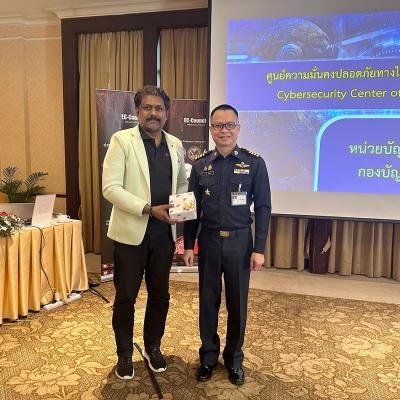Piracy refers to the unauthorized use or reproduction of someone else's intellectual property, such as music, movies, software, or books. This can include illegally downloading or sharing copyrighted materials through file-sharing networks, torrent sites, or other online platforms. Piracy can also refer to the unauthorized distribution or sale of counterfeit goods, including knock-off designer products or fake pharmaceuticals.
Piracy is considered a serious issue because it deprives creators and owners of intellectual property of their rightful earnings and can lead to economic losses for entire industries. It can also be a violation of copyright law and lead to legal consequences for individuals and organizations engaging in piracy.
With the rise of the internet and digital technology, piracy has become increasingly common and harder to control. However, efforts are being made by governments, law enforcement agencies, and the entertainment industry to combat piracy through education, enforcement, and the development of legal alternatives to piracy.
What is Movie Piracy?
Movie piracy refers to the illegal reproduction and distribution of copyrighted movies without the permission of the copyright holder. It is a type of intellectual property theft that has become increasingly common in the age of digital media. The term "piracy" comes from the idea that unauthorized copying and distribution of movies is similar to the actions of pirates who steal goods from ships at sea.
Movie piracy takes many forms, including the sale of counterfeit DVDs, the unauthorized streaming of movies on the internet, and the sharing of movies through peer-to-peer file-sharing networks. In some cases, pirates may even record movies in theaters and distribute them through illegal channels.
The impact of movie piracy on the entertainment industry is significant. Piracy results in billions of dollars in lost revenue each year, affecting not only movie studios but also actors, writers, directors, and other industry professionals. This loss of revenue can lead to job losses, reduced funding for future projects, and less investment in innovative technologies.
Moreover, movie piracy has a negative impact on the quality of the movies themselves. When studios lose money due to piracy, they may have less funding to invest in new and innovative projects. This can result in a decrease in the quality of the movies that are produced, as studios may rely on sequels, reboots, and other formulaic projects that are more likely to generate revenue.
From a legal standpoint, movie piracy is a criminal offense. Copyright laws protect the intellectual property rights of movie studios and other creators, and piracy is a violation of these rights. Individuals and organizations that engage in piracy can face significant fines and even jail time.
In addition to the financial and legal consequences of movie piracy, there are also significant cyber security risks associated with this practice. Pirated movies are often distributed through illegitimate websites and torrent networks that may contain malware and other types of cyber threats. This can put individuals at risk of malware infections, identity theft, and other cyber attacks.
How do attackers do it ?
Attackers engage in piracy by using various methods to illegally obtain, reproduce, and distribute copyrighted materials. Here are some of the ways attackers engage in piracy:
- File Sharing: Attackers use file-sharing networks like BitTorrent, uTorrent, and LimeWire to share and download copyrighted materials such as music, movies, and software. These networks allow users to download and upload files without a centralized server, making it harder for authorities to track and identify users.
- Online Streaming: Attackers also use illegal streaming sites that provide access to copyrighted content without paying for it. These sites allow users to watch movies, TV shows, and sports events without downloading them.
- Peer-to-peer (P2P) Networks: Attackers use P2P networks like Gnutella and eDonkey to share copyrighted files with others. These networks work by connecting computers directly to each other and allowing users to share files.
- Cyberlocker Sites: Attackers use cyberlocker sites like MegaUpload, Rapidshare, and MediaFire to store and share large files, including copyrighted materials. These sites require users to create an account and pay a fee for premium access, but attackers can bypass these restrictions by using fake accounts or stolen credentials.
- Pirated Software: Attackers also engage in software piracy by downloading and distributing unauthorized copies of software. They can obtain these copies from file-sharing networks, P2P networks, or by using cracks or keygens that circumvent the software's copy protection.
What do attackers benefit in doing so ?
Attackers engage in piracy to obtain various benefits, including financial gain, convenience, and access to restricted content. Here are some of the ways attackers benefit from piracy:
- Financial Gain: Attackers can profit from piracy by selling counterfeit goods or distributing copyrighted materials for a fee. For example, they may sell pirated copies of software, movies, or music on online marketplaces or through their own websites. Attackers may also profit from advertising revenue generated by pirate sites or by using malware to mine cryptocurrency on victims' devices.
- Convenience: Attackers may engage in piracy to obtain access to copyrighted materials that are otherwise expensive or difficult to obtain legally. For example, they may download movies or TV shows that are not available in their region or are not yet released on DVD. They may also download software that they cannot afford to purchase legally or that is not available for free.
- Access to Restricted Content: Attackers may engage in piracy to bypass restrictions on access to copyrighted materials. For example, they may download content that is only available to subscribers of a particular streaming service or that is blocked in their region due to licensing agreements or censorship laws. By engaging in piracy, attackers can obtain access to this content without paying for it or adhering to legal restrictions.
- Notoriety: Some attackers engage in piracy to gain notoriety or to demonstrate their technical skills. By distributing copyrighted materials or by creating and distributing pirated software or other illegal content, attackers may gain attention and recognition within certain communities or among their peers.
can that be monitored ? If yes, how ?
- Digital Tracking: Law enforcement agencies and copyright holders can use digital tracking technologies to monitor and identify piracy activities online. These technologies can track the sharing and downloading of copyrighted materials on file-sharing networks, P2P networks, and cyberlocker sites. Digital tracking can also be used to identify the IP addresses of users engaging in piracy activities, which can then be used to take legal action against them.
- Legal Action: Copyright holders can take legal action against individuals and organizations engaged in piracy. This can involve filing civil lawsuits against the pirates or seeking criminal charges against them. Legal action can also be taken against the online platforms hosting pirated content, forcing them to remove the content or shut down their operations.
- Technical Measures: Copyright holders can use technical measures to prevent or limit piracy activities. For example, they can use digital rights management (DRM) technologies to prevent the unauthorized reproduction or distribution of copyrighted materials. They can also use watermarking technologies to track the distribution of copyrighted materials and identify the sources of piracy.
- Anti-Piracy Campaigns: Copyright holders can also engage in anti-piracy campaigns to raise awareness about the harms of piracy and encourage people to use legal alternatives to access copyrighted materials. These campaigns can involve public education initiatives, advertising campaigns, and partnerships with online platforms and service providers to promote legal content distribution.
What is a torrent ?
A torrent is a file that contains information about how to download a larger file, such as a movie, TV show, or software program. This file-sharing method relies on a peer-to-peer (P2P) network, where users can share and download files from one another without a centralized server.
When a user wants to download a file using a torrent, they first need to obtain a torrent file or a magnet link. The torrent file contains information about the file being downloaded, such as its name, size, and location. The magnet link is a URL that points to a specific torrent file and allows users to easily start downloading the file without having to first download the torrent file.
Once the user has obtained the torrent file or magnet link, they can use a BitTorrent client to begin downloading the actual file. The client software connects to the P2P network and downloads the file in small pieces, called "chunks," from other users who have already downloaded or are currently downloading the file. As the user downloads more pieces of the file, the BitTorrent client also uploads pieces of the file to other users in the network.
Torrents have become a popular method for file-sharing due to their decentralized nature and the ability for users to share large files without the need for a centralized server. However, the use of torrents for downloading copyrighted material, such as movies or music, is illegal and can result in legal consequences for the user.
It is also important to note that downloading torrents can come with various risks, such as malware, viruses, and other types of malicious software that can be embedded in the files being downloaded. Users should be cautious when downloading torrents and ensure they are downloading files from a trusted source. Additionally, users can protect themselves by using antivirus software and a Virtual Private Network (VPN) to encrypt their internet connection and prevent their activity from being tracked by third parties.
What is movie torrent poisoning ?
Movie torrent poisoning is a tactic used by copyright owners and anti-piracy organizations to disrupt the sharing of copyrighted movies through peer-to-peer (P2P) file-sharing networks. The goal of movie torrent poisoning is to discourage or prevent users from downloading or sharing copyrighted content by making it more difficult or less desirable to do so.
Movie torrent poisoning works by inserting fake or corrupted files into popular torrent sites, which are then downloaded by unsuspecting users. These fake files may be labeled with the name of a popular movie, but when downloaded, they either contain no content or are corrupted in such a way that they cannot be played or viewed.
By flooding torrent sites with these fake files, copyright owners and anti-piracy organizations hope to discourage users from downloading or sharing copyrighted movies through P2P networks. This tactic can be effective because it creates frustration and confusion among users, who may be unsure whether a particular movie file is legitimate or fake.
Movie torrent poisoning can also have legal implications for users who unwittingly download fake or corrupted files. In some cases, these files may contain malware or other malicious software that can harm users' devices or compromise their security. Additionally, downloading and sharing copyrighted content without permission is illegal in many countries and can result in fines or legal action.
Overall, movie torrent poisoning is a tactic used by copyright owners and anti-piracy organizations to disrupt the sharing of copyrighted movies through P2P networks. While it can be effective in discouraging piracy, it can also create confusion and frustration among users and have legal implications for those who inadvertently download fake or corrupted files.
How can pirated torrent be stopped ?
Stopping pirated torrents is a complex and challenging task, as it requires a multi-pronged approach that involves a combination of legal, technological, and educational measures. Here are some ways that can be used to stop pirated torrents:
- Legal Measures: One of the primary ways to stop pirated torrents is through legal action. Copyright owners can file lawsuits against individuals or organizations that engage in piracy, including those who upload or download copyrighted material through torrent sites. Governments can also pass laws that criminalize piracy and provide authorities with the power to shut down pirate sites and prosecute offenders.
- Technological Measures: Another way to stop pirated torrents is through technological measures, such as digital rights management (DRM) software and watermarks. DRM software can be used to encrypt copyrighted material and prevent it from being copied or shared without permission. Watermarks can be added to copyrighted material to identify the source of the content and trace it back to the original owner.
- Website Blocking: Governments can block access to pirate sites by ordering internet service providers (ISPs) to block access to those sites. This can be an effective way to limit the availability of pirated content and discourage people from engaging in piracy.
- Education and Awareness: Education and awareness campaigns can also be effective in stopping pirated torrents. By educating people about the harm caused by piracy and the legal and ethical implications of engaging in it, individuals may be discouraged from engaging in piracy. Copyright owners can also provide legal alternatives to piracy, such as streaming services and online marketplaces, that provide access to copyrighted content at affordable prices.
- Cooperation and Collaboration: Stopping pirated torrents requires cooperation and collaboration between governments, copyright owners, ISPs, and technology companies. By working together, these stakeholders can share information and resources, develop and implement effective anti-piracy strategies, and take swift action against pirates.
Why is it a cyber threat ?
Piracy is considered a cyber threat because it poses significant risks to individuals, organizations, and the broader economy. Here are some of the reasons why piracy is a cyber threat:
- Malware and Viruses: Attackers often use pirated software, movies, or music as a vehicle to distribute malware and viruses. They may embed malware in the pirated files or use them to lure victims to download malicious software or visit infected websites. This can lead to the compromise of personal and confidential data, identity theft, or the destruction of critical systems and data.
- Economic Losses: Piracy can result in significant economic losses for copyright owners and for industries as a whole. Pirated materials are sold at a fraction of their actual value, which can lead to lost revenue and reduced profits. This can also discourage innovation and investment in new technologies or products. According to industry estimates, piracy costs the global economy billions of dollars each year.
- Legal Consequences: Engaging in piracy can also result in legal consequences for both individuals and organizations. Copyright infringement is a violation of intellectual property law and can lead to lawsuits, fines, and criminal charges. In addition, individuals or organizations engaged in piracy may also face penalties or sanctions from regulatory bodies or law enforcement agencies.
- Reputation Damage: Organizations that are found to be involved in piracy can suffer significant damage to their reputation and brand image. This can lead to loss of customer trust and loyalty, decreased sales, and negative publicity. For individuals, engaging in piracy can also damage their professional reputation and future job prospects.
- Cybercrime: Piracy is often associated with other types of cybercrime, such as phishing, hacking, and identity theft. Attackers may use pirated materials to lure victims into sharing personal or financial information, or to gain unauthorized access to sensitive data or systems.
How to protect yourself from Movie Piracy Cyber Threats?
- Use Legal Streaming Services: Use legitimate streaming services that offer legal access to movies and TV shows. These services are typically affordable and offer a wide range of content without the risk of piracy or malware. Popular examples include Netflix, Amazon Prime Video, Hulu, and Disney+.
- Avoid Suspicious Websites: Avoid visiting websites that offer pirated movies or TV shows. These sites are often loaded with malware that can infect your device and compromise your personal data. Stick to reputable websites and avoid clicking on suspicious links or pop-ups.
- Use Antivirus and Anti-malware Software: Install reputable antivirus and anti-malware software on your devices to protect against cyber threats. These programs can detect and remove malware and other malicious software that may be lurking on your device.
- Update Your Software: Keep your software and operating systems up to date with the latest security patches and updates. These updates often contain security fixes that can protect against vulnerabilities that attackers may exploit.
- Be Cautious of Emails and Messages: Be cautious of emails and messages that offer free movies or access to pirated content. These messages may contain phishing scams or malware that can compromise your device or steal your personal data.
- Use Strong Passwords: Use strong, unique passwords for all your online accounts, including streaming services. This can prevent attackers from accessing your accounts and stealing your personal data.
Any Tools to Monitor ?
- Digital Rights Management (DRM) software: DRM software is used to protect digital content from unauthorized copying and distribution. This software is often used by copyright owners to protect their works, such as movies, music, and software. DRM software can monitor and restrict access to copyrighted materials, preventing unauthorized use and distribution.
- Anti-piracy services: Anti-piracy services are third-party companies that specialize in monitoring and detecting online piracy. These services use advanced algorithms and techniques to scan the internet for unauthorized copies of copyrighted materials, such as movies, music, and software. Once piracy is detected, these services can take action to remove the unauthorized content or notify the copyright owner.
- Watermarking: Watermarking is a technique used to embed a unique identifier into digital content to track its use and distribution. This technique can be used to monitor and detect piracy by tracing the source of the unauthorized copies. For example, a unique watermark can be embedded into a movie or song, allowing the copyright owner to trace the distribution of the content and identify the source of any unauthorized copies.
- Web scraping: Web scraping is a technique used to extract data from websites and other online sources. This technique can be used to monitor online marketplaces and social media platforms for instances of piracy. By monitoring these sources, copyright owners can detect instances of unauthorized distribution of their works and take action to remove the content.
Conclusion:
In conclusion, piracy is a serious issue that can have significant economic and legal consequences for both individuals and organizations. Attackers engage in piracy to obtain various benefits, including financial gain, convenience, and access to restricted content. However, there are several tools available to monitor and detect piracy, including DRM software, anti-piracy services, watermarking, and web scraping.
At digiALERT, we recognize the importance of protecting digital content from piracy. Our team of experts specializes in providing anti-piracy solutions that help our clients protect their works from unauthorized use and distribution. By using advanced techniques and tools, we monitor the internet for instances of piracy and take action to remove unauthorized copies of our clients' works. With our anti-piracy solutions, our clients can protect their intellectual property and ensure that their content is being used and distributed legally.








